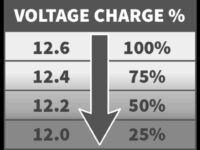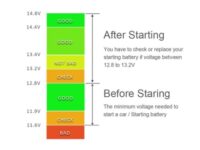Ignite Your Drive: Unveiling the Power of Car Starters
Rev up Your Engine: The Ultimate Guide to How Many Volts It Takes to Start a Car
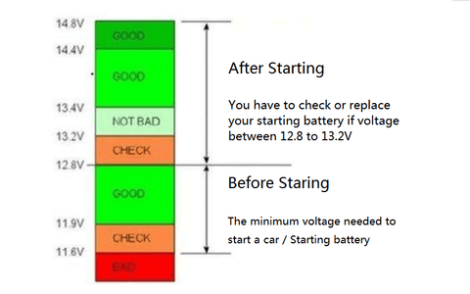
Image Source: shopify.com
When it comes to starting your car, one of the most crucial components is the car starter. This small yet powerful device plays a key role in getting your engine up and running, allowing you to hit the road and embark on your next adventure. But have you ever stopped to think about how many volts it takes to start a car?
The answer might surprise you. In most cases, a car starter requires anywhere from 12 to 24 volts to effectively kickstart your engine. This voltage is necessary to overcome the initial resistance of the engine and get the pistons moving, ultimately allowing the combustion process to take place and the car to come to life.
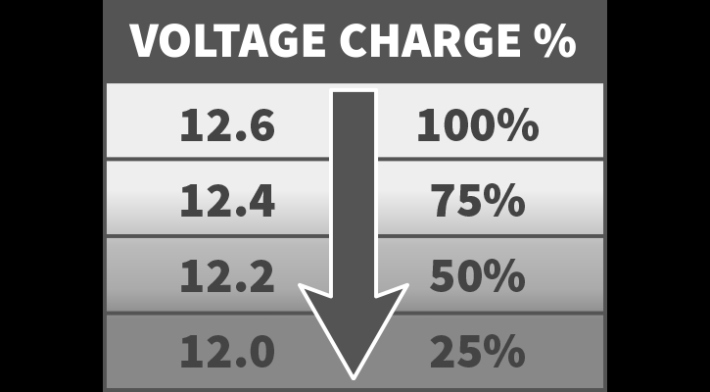
Image Source: windows.net
But how exactly does the car starter harness this power? It all starts with the battery. The battery in your car acts as a reservoir of electrical energy, storing up power that can be used to start the engine. When you turn the key in the ignition, the battery sends a surge of electricity to the car starter, which then engages with the flywheel and turns the engine over.
The car starter itself is a marvel of engineering, with intricate components working together to create the necessary torque to start the engine. Inside the starter, you’ll find a motor that is powered by the battery, as well as a solenoid that engages with the flywheel to crank the engine. These components work in perfect harmony to ensure that your car starts up smoothly every time.
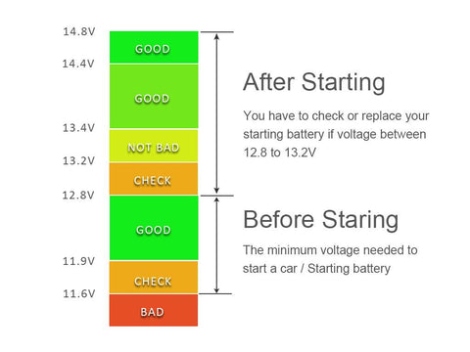
Image Source: shopify.com
Of course, the voltage required to start a car can vary depending on a number of factors. In colder weather, for example, the oil in the engine may be thicker, requiring more power to get the engine moving. Similarly, if your battery is old or worn out, it may not be able to provide the necessary voltage to start the car effectively.
To ensure that your car starts up reliably, it’s important to keep an eye on the health of your battery and car starter. Regular maintenance and Inspections can help you catch any issues before they become major problems, allowing you to address them quickly and keep your engine running smoothly.
So the next time you turn the key in the ignition and hear the satisfying roar of your engine coming to life, take a moment to appreciate the power of the car starter. With just a few volts of electricity, this small but mighty device is able to kickstart your engine and propel you on your way. So go ahead, ignite your drive and hit the road with confidence, knowing that your car starter has the power to get you where you need to go.
Voltage Vroom: Discovering the Magic Number for Your Engine
Revving up your engine and getting ready to hit the road can be an exciting experience, but have you ever stopped to wonder what it actually takes to start your Car? One of the key components in starting your vehicle is the voltage that powers your engine. Understanding how many volts it takes to start a car can make a big difference in ensuring your ride is smooth and reliable.
When you turn the key in your ignition, a series of events are set in motion that ultimately lead to your engine roaring to life. One of the first things that happens is the battery in your car sending a burst of electricity to the starter motor. This electricity is measured in volts, and the right amount is crucial to make sure your engine starts efficiently.
So, how many volts does it actually take to start a car? The magic number is typically around 12 volts. This is the optimal voltage needed to power the starter motor, which then cranks the engine and gets it running. If the voltage is too low, the starter motor may not have enough power to turn the engine over, leaving you stuck in the driveway. On the other hand, if the voltage is too high, it could potentially damage the starter motor and other electrical components in your car.
To ensure that your car starts smoothly every time, it’s important to make sure that your battery is in good condition and properly charged. A weak or dying battery can struggle to provide the necessary voltage to start your engine, leading to issues like slow cranking or no start at all. Regularly checking your battery’s voltage and making sure it is within the optimal range can help prevent these problems.
In addition to the battery, the alternator in your car plays a crucial role in maintaining the voltage needed to start your engine. The alternator is responsible for recharging the battery while your car is running, so if it is not functioning properly, the voltage in your battery could drop below the necessary level. Keeping your alternator in good working condition can help ensure that your battery stays charged and ready to start your engine at a moment’s notice.
Another factor that can affect the voltage required to start your car is the temperature outside. In colder weather, the chemical reactions in your battery slow down, which can reduce the voltage it is able to supply to the starter motor. This is why many people experience difficulty starting their cars on cold winter mornings. To combat this, some car batteries are equipped with cold-cranking amps, which provide extra power in cold weather to ensure that your engine starts smoothly.
In addition to the battery and alternator, the voltage needed to start your car is also influenced by the size and type of engine you have. Larger engines require more power to get them going, so they may need a higher voltage to start than smaller engines. Similarly, diesel engines typically require more voltage to start than gasoline engines due to their higher compression ratios.
Overall, understanding the voltage requirements of your car’s engine is essential for keeping your ride running smoothly. By ensuring that your battery is properly charged, your alternator is in good working condition, and your engine size and type are taken into account, you can make sure that your car starts reliably every time. So rev up your engine, hit the road, and enjoy the ride knowing that you’ve got the magic number of volts to keep you going.
Spark Your Ride: The Science Behind Starting a Car
Rev up Your Engine: The Ultimate Guide to How Many Volts It Takes to Start a Car
When you turn the key in your car’s ignition, you expect the engine to roar to life effortlessly. But have you ever wondered what actually happens under the hood to make that possible? It all comes down to the science behind starting a car, and more specifically, the voltage required to get your engine up and running.
In order to understand the science behind starting a car, we first need to delve into the basics of how a car engine works. Your car’s engine is essentially a complex machine that converts fuel into mechanical energy to propel your vehicle forward. But in order to kickstart this process, you need a spark – quite literally.
The key component responsible for generating this spark is the ignition system. When you turn the key in your ignition, a signal is sent to the ignition coil, which then builds up a high voltage charge. This charge is then sent to the spark plugs, where it ignites the fuel-air mixture in the combustion chamber. This ignition process creates a controlled explosion that ultimately powers your engine.
But how many volts does it actually take to create this spark and start your car? The answer varies depending on the make and model of your vehicle, but on average, most cars require around 12 volts to start. This voltage is typically supplied by your car’s battery, which acts as the power source for the entire electrical system.
If your car battery is low on voltage, it can result in sluggish starts or even prevent your engine from starting altogether. This is why it’s crucial to ensure that your car battery is in good condition and properly charged. Regular maintenance, such as checking the battery terminals for corrosion or ensuring that the battery is securely connected, can help prevent starting issues due to low voltage.
In addition to the battery, the starter motor also plays a key role in the starting process. The starter motor is responsible for turning the engine over when you turn the key in the ignition. This action requires a significant amount of power, which is why it’s important to have a fully charged battery to provide the necessary voltage to the starter motor.
In some cases, you may encounter starting issues even with a fully charged battery. This could be due to issues with the ignition switch, the starter solenoid, or even the spark plugs themselves. Regular maintenance and Inspections can help identify and address these issues before they result in a breakdown.
In conclusion, the science behind starting a car is a fascinating process that relies on the right amount of voltage to create the spark needed to ignite the fuel-air mixture in the combustion chamber. By understanding the role of voltage in starting your car, you can ensure that your engine runs smoothly and reliably every time you hit the road. So next time you turn the key in your ignition, remember the science behind the spark that ignites your ride.
Go the Extra Volt: Tips for Keeping Your Engine Running Smoothly
Revving up your engine and getting ready to hit the road is an exhilarating feeling. But before you can even think about cruising down the highway, you need to make sure your Car is in tip-top shape. One crucial component of your vehicle that often gets overlooked is the battery. Without a properly functioning battery, your car won’t start, leaving you stranded and frustrated. In this guide, we will delve into the importance of maintaining your car’s battery and provide you with some valuable tips on how to keep your engine running smoothly.
First and foremost, it’s essential to understand the role of the battery in starting your car. The battery is responsible for providing the initial surge of power needed to start the engine. Without a fully charged battery, your car simply won’t start. This is why it’s crucial to regularly check the condition of your battery and ensure that it is in good working order.
One of the best ways to maintain your car’s battery is to keep it clean and free of corrosion. Over time, dirt and grime can build up on the terminals of the battery, hindering its ability to function properly. By regularly cleaning the terminals with a mixture of baking soda and water, you can prevent corrosion and extend the life of your battery.
Another important tip for keeping your engine running smoothly is to avoid overloading your electrical system. Many modern cars come equipped with a plethora of electronic devices, from GPS systems to entertainment consoles. While these devices can enhance your driving experience, they can also put a strain on your battery and alternator. To prevent unnecessary wear and tear on your electrical system, try to limit the use of electronic devices when your car is not running.
In addition to keeping your battery clean and avoiding overloading your electrical system, it’s important to monitor the condition of your battery regularly. A simple way to do this is to perform a visual Inspection of the battery and check for any signs of damage or wear. If you notice any cracks, leaks, or corrosion on the battery, it may be time to replace it.
Furthermore, it’s essential to pay attention to how your car starts. If you notice that your engine is slow to crank or if you hear a clicking noise when you turn the key, it could be a sign that your battery is failing. In this case, it’s crucial to have your battery tested by a professional to determine if it needs to be replaced.
Lastly, investing in a battery charger can be a wise decision to ensure that your battery remains fully charged at all times. By regularly charging your battery, you can prevent it from losing power and extend its lifespan. Additionally, a battery charger can come in handy during emergencies when your car won’t start due to a dead battery.
In conclusion, maintaining your car’s battery is essential for keeping your engine running smoothly. By following these tips and tricks, you can ensure that your car starts effortlessly every time and avoid the frustration of a dead battery. So go the extra volt and give your car the care it deserves!
how much volts to start a car

